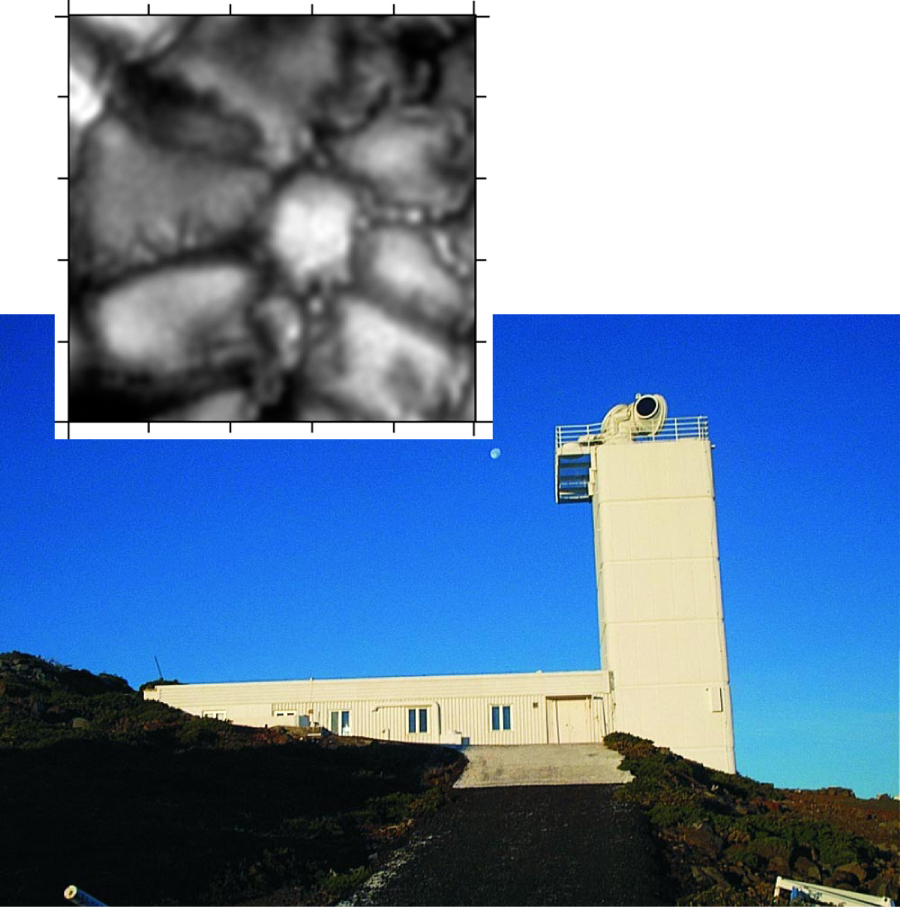New Swedish Solar Telescope Basks on La Palma
DOI: 10.1063/1.1522207
Sweden’s new solar telescope on the Spanish island of La Palma grabbed the spotlight in ground-based Sun-gazing when it came on line this past spring. It’s likely to keep that honor for a few years, until it’s eclipsed by the Advanced Technology Solar Telescope (see accompanying story).
With its 97-cm aperture and adaptive optics, the telescope boasts record resolution imaging of the Sun. “We have already reached 0.1 arcseconds resolution—this has never been achieved before with any other solar telescope,” says Göran Scharmer, head of the Royal Swedish Academy of Sciences’ Institute for Solar Physics, which runs the telescope. For spectral and magnetic-field measurements, Scharmer adds, the resolution is expected to surpass 0.2 arcseconds. The telescope is intended mostly for exploring the small-scale magnetic fields of the Sun’s atmosphere and the spots on its surface. Spatially resolved solar spectra could also help to interpret integrated stellar spectra.
The new telescope’s cost was kept to $1.9 million by retrofitting the observatory of its predecessor, the 47.5-cm Swedish Vacuum Solar Telescope (SVST). As hosts, Spanish solar physicists get 20% of the observing time; 5% is open to the international community, and the rest is reserved for telescope partners and Swedish observers.
The SVST, meanwhile, which was retired from La Palma after nearly 15 years, is being set up for educational and research purposes in Oakland, California, by the nonprofit Chabot Space & Science Center. Chabot bought the SVST for about $100 000 with a grant from Wells Fargo Bank. Says Kevin Medlock, who is overseeing reconstruction, “Before [the SVST] was replaced, this was one of the best solar telescopes in the world. People are astonished we got it.” Medlock expects to have the telescope, rechristened the Chabot Vacuum Solar Telescope, up and running for the public—and scientists—by the middle of next year.

Magnetic structure details (top) of the Sun, imaged on 15 July with Sweden’s new solar telescope (bottom). The distance between tick marks is 1 arcsecond, or 734 km on the Sun’s surface.
(Courtesy of Göran Scharmer [data image] and Dan Kiselman [telescope], Institute for Solar Physics, the Royal Swedish Academy of Sciences.)

More about the Authors
Toni Feder. tfeder@aip.org
